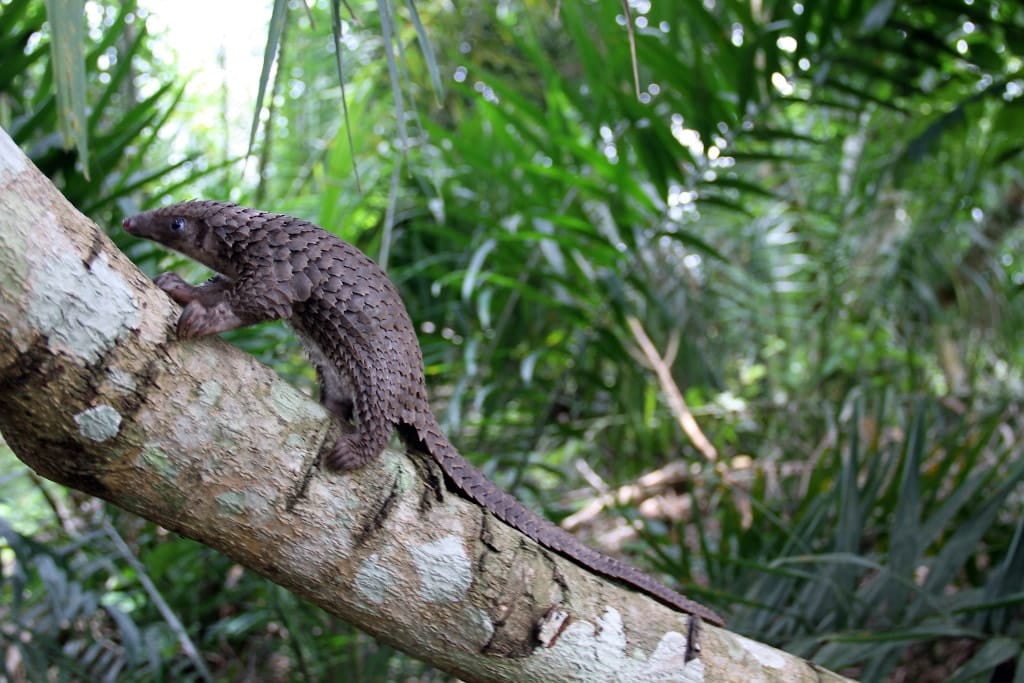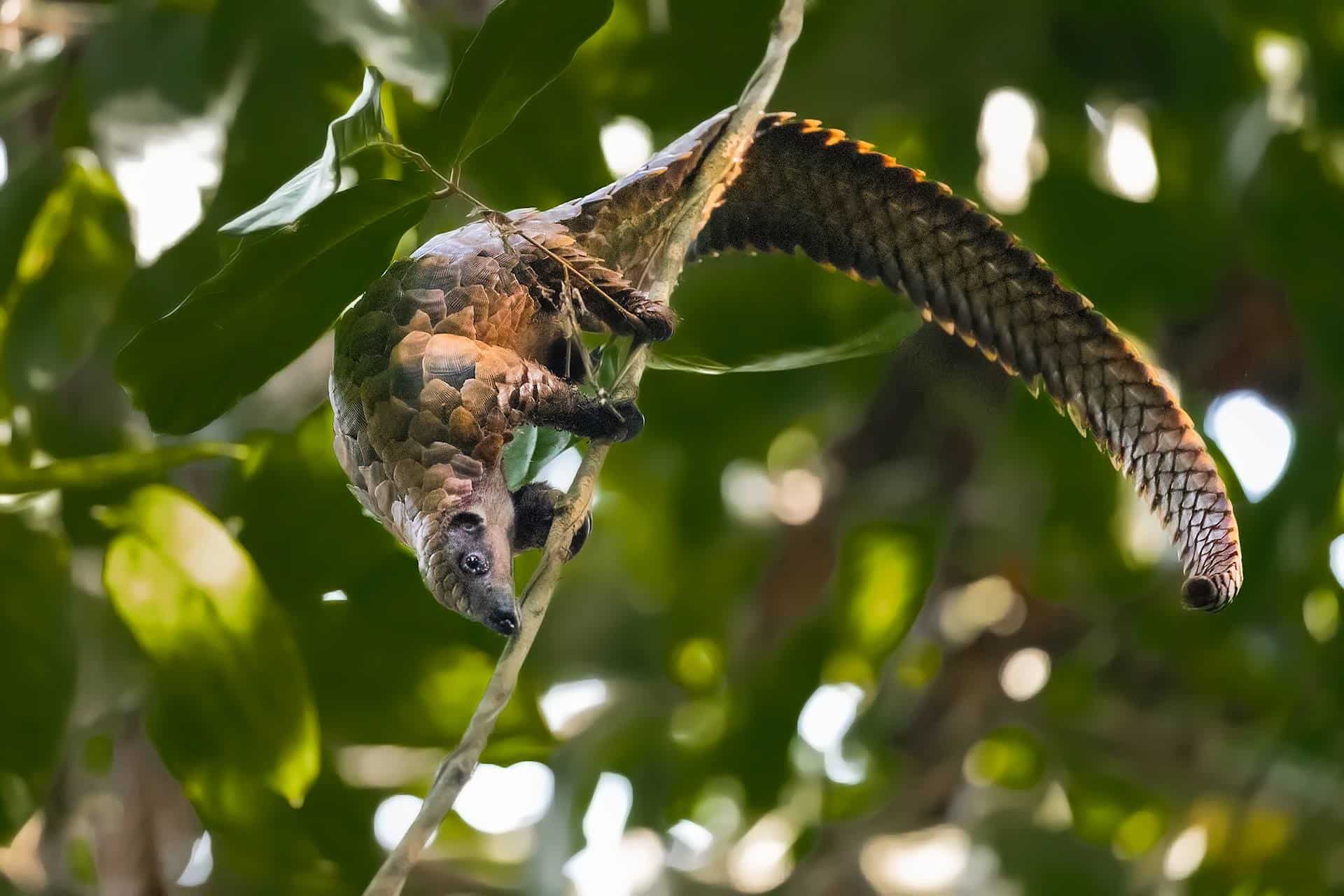The world’s two smallest pangolins, the white-bellied and black-bellied pangolins, are found in Central and West Africa. They are the continent’s only arboreal pangolin species.

Guy Colborne
Also known as the tree pangolin or three-cusped pangolin, the white-bellied pangolin lives in forested habitats across numerous countries, from Guinea to northern Angola to Rwanda. They are semi-arboreal, spending time both in trees and on the ground, with a semi-prehensile tail and tail pads used for climbing. The white-bellied pangolin is distinguished by its thinner, three-cusped scales and its smaller size, weighing on average 2.2 to 4.4 pounds. These pangolins are heavily poached for local use and international trafficking and are listed as Endangered.

Anita Mishra
The tiniest and most arboreal of all of the world’s pangolins is the black-bellied pangolin, also known as the long-tailed pangolin. Spending nearly all its time in trees, this pocket-sized pangolin has the most adapted tail for its life in the canopies. The black-bellied pangolin has a remarkably long tail containing up to 47 vertebrae and measuring up to 2 feet long. It is also the most agile, prehensile, and padded tail amid pangolins. Black-bellied pangolins have the smallest body size; although they are similar in weight to white-bellied pangolins, their lengthy tail contributes to most of their total weight. With their keen tree-dwelling adaptations, black-bellied pangolins inhabit lush forests from Sierra Leone to the Democratic Republic of Congo. The species is currently listed as Vulnerable.

